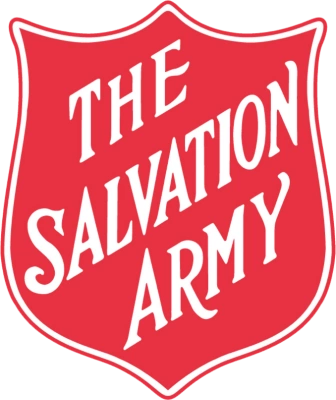For its first 100 years in Australia, The Salvation Army (TSA) operated as two separate territories. But, in December 2018, the two territories merged to become one national organisation with more than 112,000 officers (ordained ministers), employees, and volunteers.
As it planned for this transformation, TSA realized it had 26 different systems administering its various people processes resulting in no single source of truth. The organization needed to bring its 112,000-strong workforce into one system and do things “one way."
TSA wanted one way to manage its people, introduce national processes and policies using cloud-based technology with one national HR team supporting the workforce. The goal was to standardize and automate its current manual, paper-based processes, lightening administration, so workers could focus more of their efforts on the mission.
To find the right technology solution, TSA used a Human Capital Management (HCM) consultant to gather business requirements, assess the market using the Gartner Magic Quadrant for Cloud HCM Suites and develop the business case.
One of the things we really appreciated was seeing continual annual customer satisfaction survey ratings of 98%. It was also clear that this was an organisation that mirrored our values.
HR Transformation Manager, The Salvation Army
Why Workday.
TSA was seeking a robust, scalable system that could manage the entire hire-to-retire process, with the ability to handle its different types of workers. The organization needed a system that could manage the needs of its officers, who are moved to a different appointment every 3–5 years. The process involves complex HR administration, including mobility, career planning, succession planning, and family relocation. HR Transformation Manager, Catherine Valsinger, wrote detailed demonstration scripts so vendors could demonstrate how this unique process would work in their environment.
“When we assessed Workday, our users loved the fresh, new end-user experience,” says Catherine. “They loved the feel of the product, the flexibility of the system, and the power of having one source of information. Even more importantly, they liked its power to scale with us as we matured in introducing new processes such as Talent Management.”
Despite this, getting the business case over the line was a real challenge. “When it came down to it, what actually got the case over the line was Workday’s ability to manage compliance checks for our workers as TSA must ensure its workforce is compliant with child safe-guarding principles. Managing working with children and police checks was a highly administrative manual task. The comfort of having an up-to-date dashboard showing who is working with children and when their checks were validated was a big drawcard, ” explains Catherine.
Results.
Just five months after going live, TSA has already seen early benefits from using its nation-wide, single, cloud-based HR system. TSA hired a benefits realization officer to track the 88 measurable benefits identified in the business case for Phase 1. In the first four months, 22 of those benefits were realized, with the remainder expected before October 2020.
Significantly reduced administrative burden after removing manual processes and disparate systems
Personnel can focus on value-added activities and the organizational mission
Reduced organizational risk
Better reporting helping leaders and managers to make evidence-based decisions
Improved ability to manage and understand employees’ lifetime journey
Automated compliance checking.
To support compliance checking, Workday built an integration with fit2work—a third party compliance checking solution that enables TSA to quickly and easily verify candidates’ credentials and qualifications.
In contrast to the old manual process, which required endless back and forth between staff and candidates, the system now automatically sends applicants a link to complete a police check, with the results coming back automatically to TSA.
“With 112,000 workers, it takes an enormous amount of effort to manually sustain up-to-date national and international police checks—or to organize and track working with children checks when someone moves into a child-facing role,” explains Catherine.
All of those things are now possible and easy through Workday. The increased efficiency and improved risk management are some of the biggest benefits we’ve seen so far.
HR Transformation Manager, The Salvation Army
Tracking, monitoring, and administering medical claims.
As part of a unique remuneration package for Officers, TSA pays medical expenses for its officers and their families. TSA is now using the Workday expense module to track, monitor, and reimburse medical claims automatically.
“Before, it was all manual,” says Catherine. “Now we’re doing it through Workday, and it’s fabulous. The officers love it. They’ve gone from a really ridiculous, outdated manual process, to claiming medical expenses on their phone and getting money back within a day. It’s been a huge success.”
Improved visibility of risk.
Because Workday assigns control to managers, its implementation surfaced numerous instances where managers had offloaded permissions to administrative assistants or were making decisions outside the scope of approved budgets.
Implementation also highlighted the workarounds being used in manual systems; for example, people weren’t completing forms correctly and leaving it to co-ordinators to fix up errors during manual data entry.
“People used to bypass the system all the time through manual or roundabout ways. But now compliance is built into the system,” says Catherine. “We didn’t know any of that stuff until we went live and all of a sudden it was exposed — all of these things we’d previously had no visibility of. Workday also highlighted glaring things that had been wrong with our data for years.”
Powerful data analytics tool during a crisis.
In practical terms, Workday has enabled TSA in the midst of the COVID-19 pandemic:
Identifying customer-facing front line workers who are over 65 and moving them to other roles
Determining the number of casual workers with more than 12 months’ service to understand JobKeeper payment eligibility
Adding new allowances to manage the distribution of government payments
Adding redeployment pool review into recruitment processes
Over the next few years, Workday and The Salvation Army will grow together. We’ve already seen a wonderful partnership with Workday so far—and we look forward to that continuing,
HR Transformation Manager, The Salvation Army

